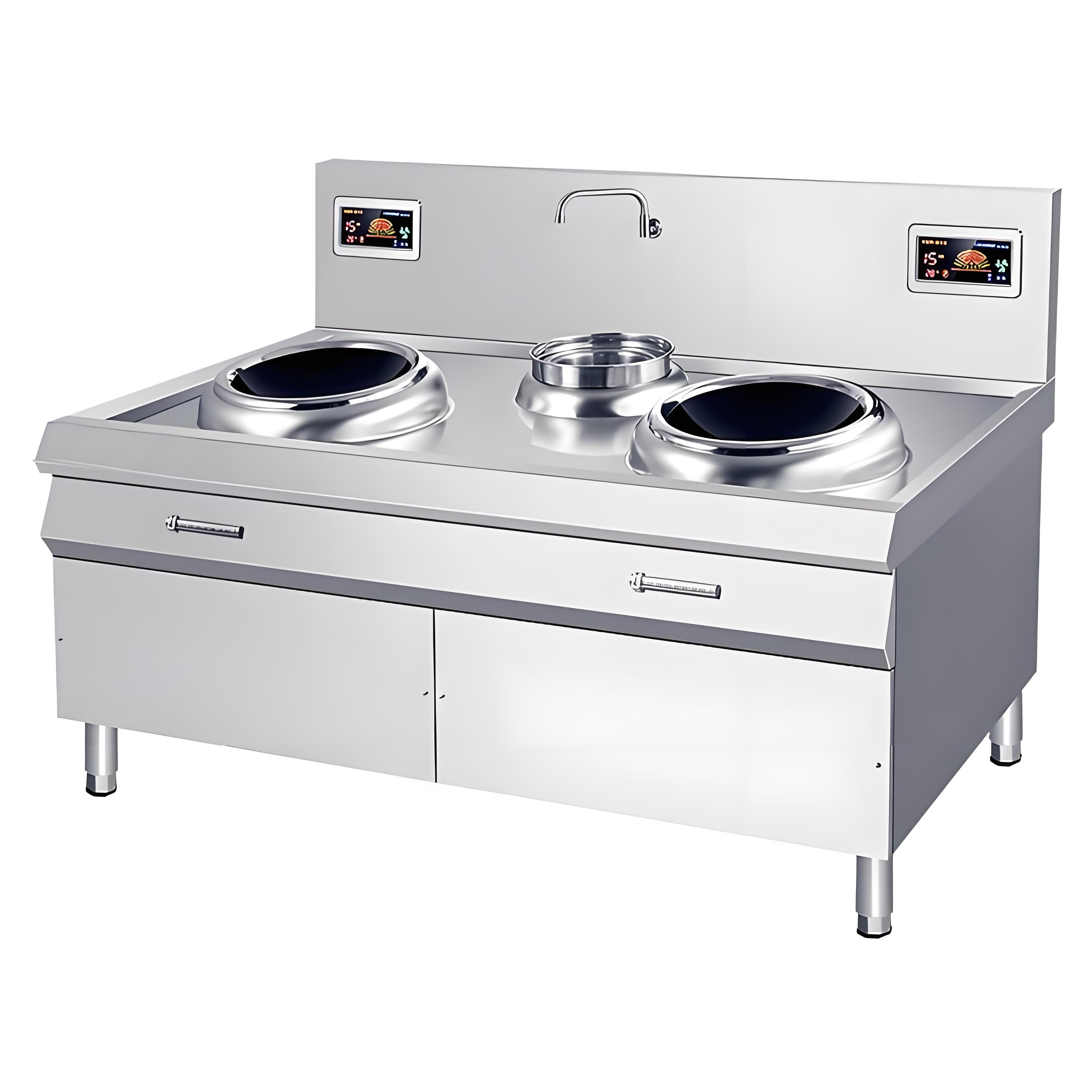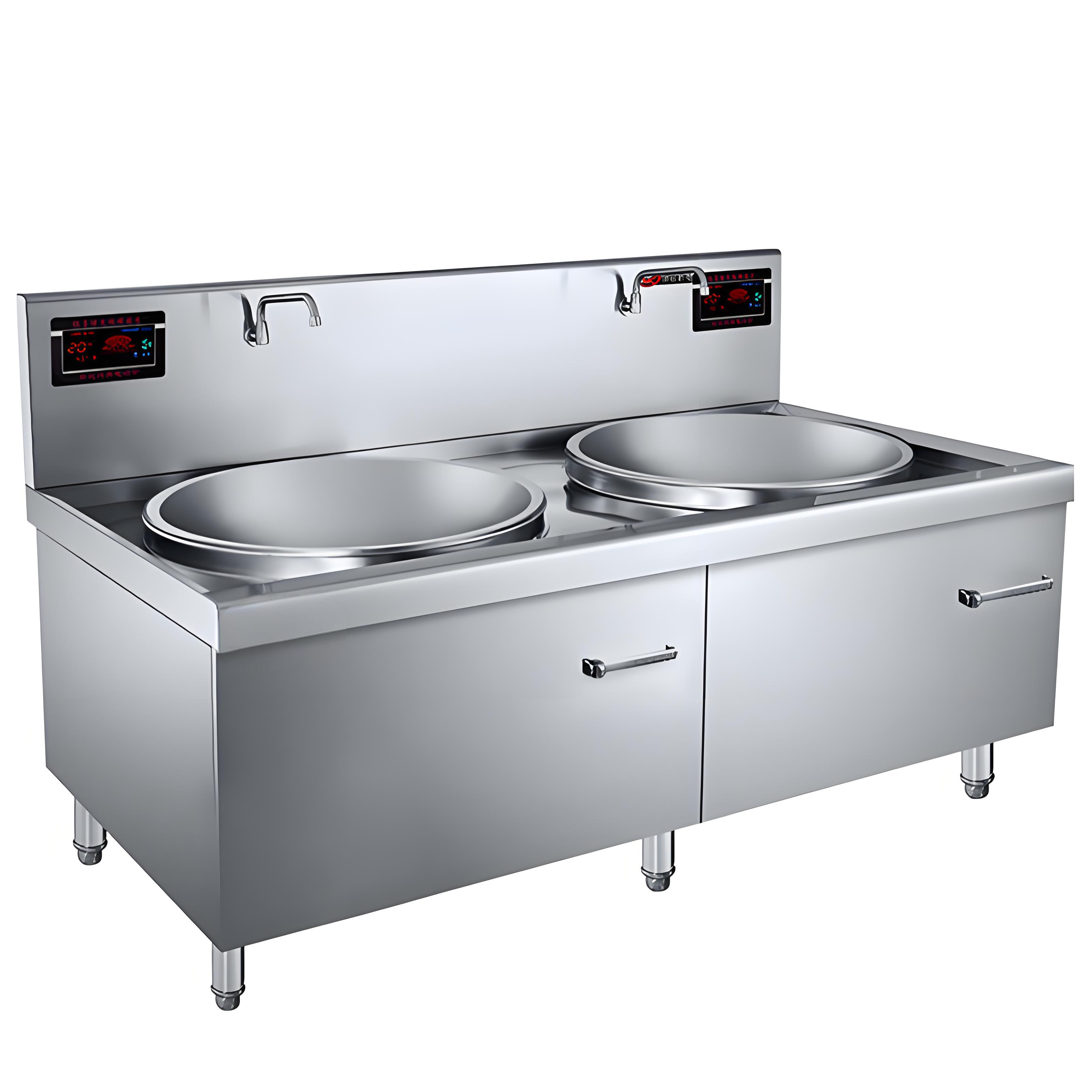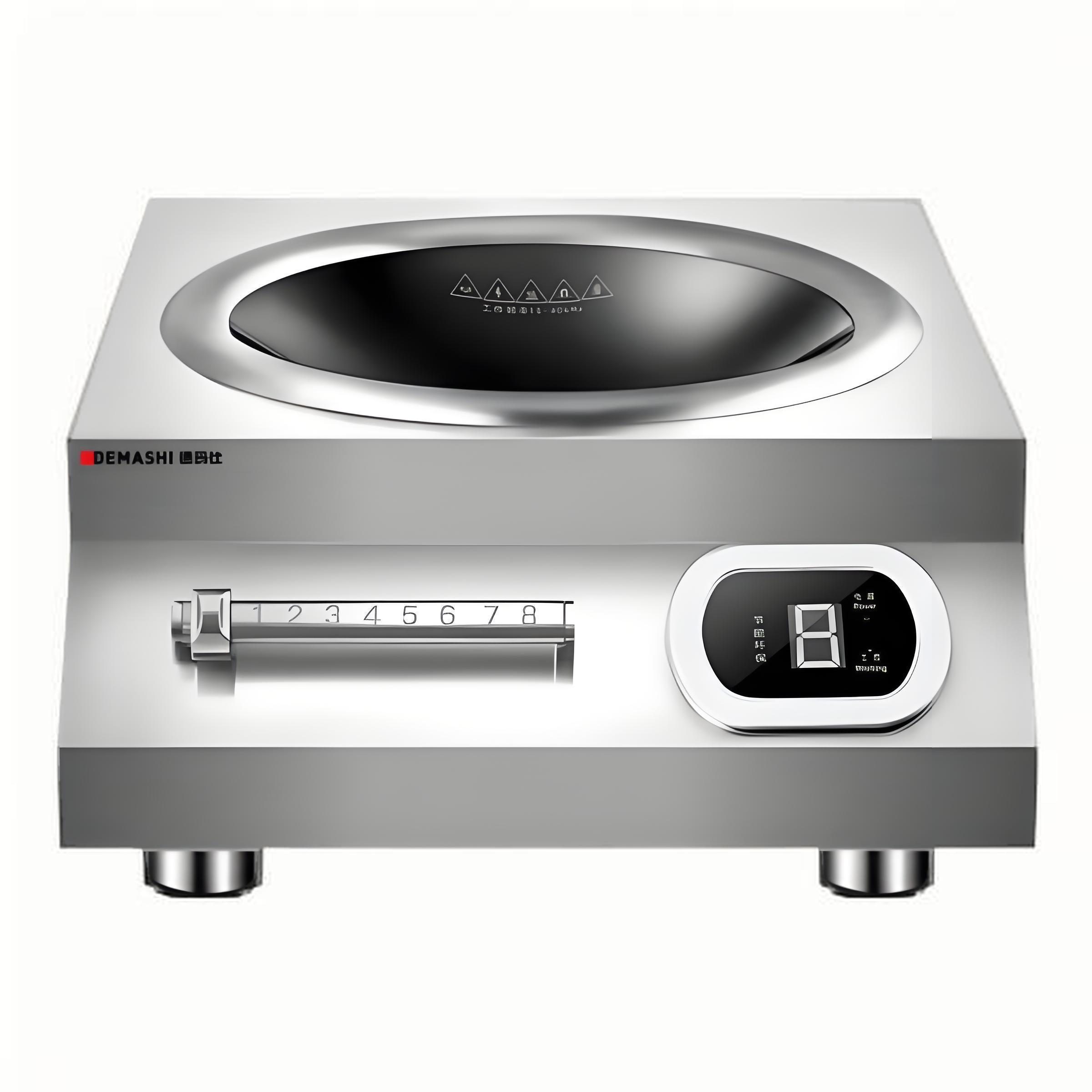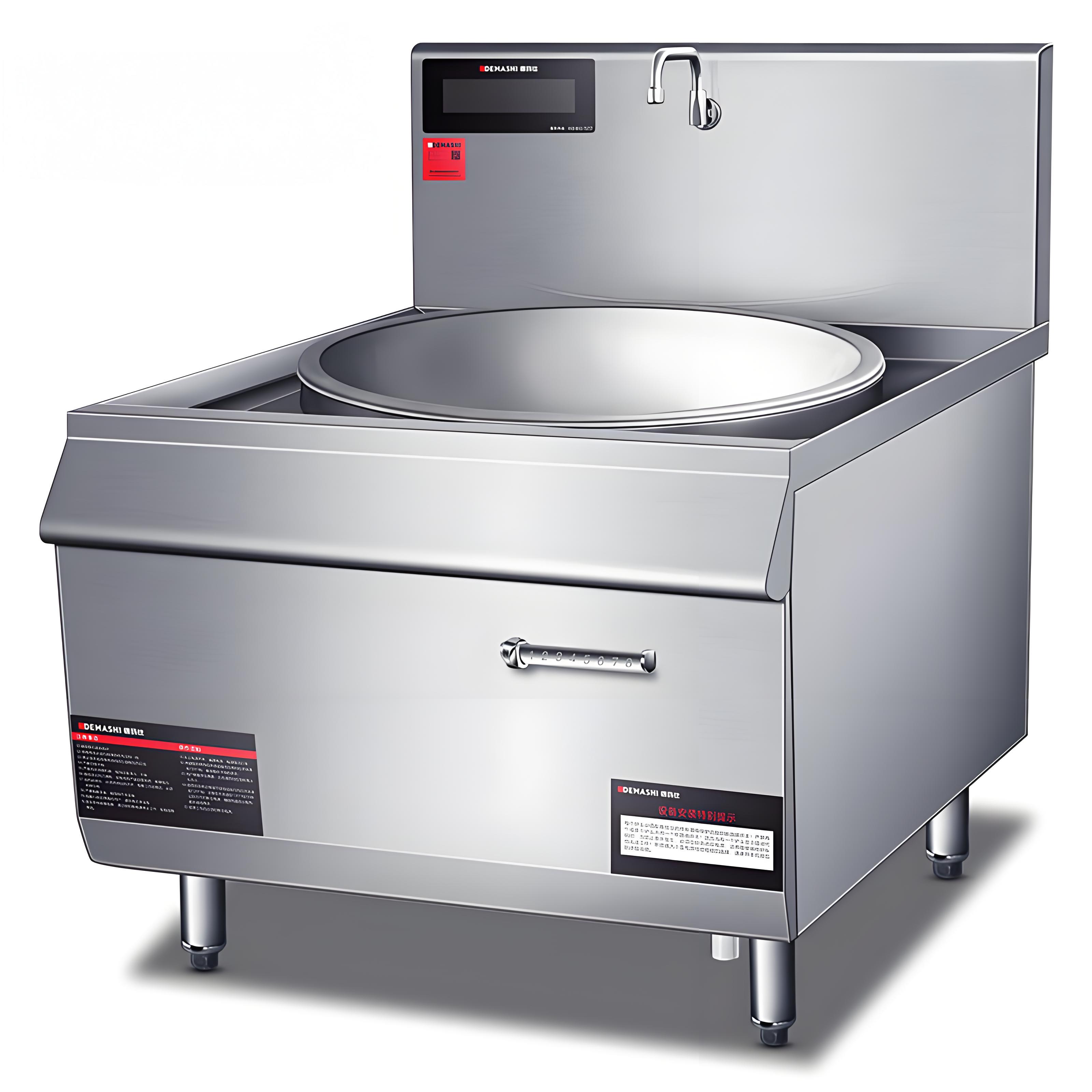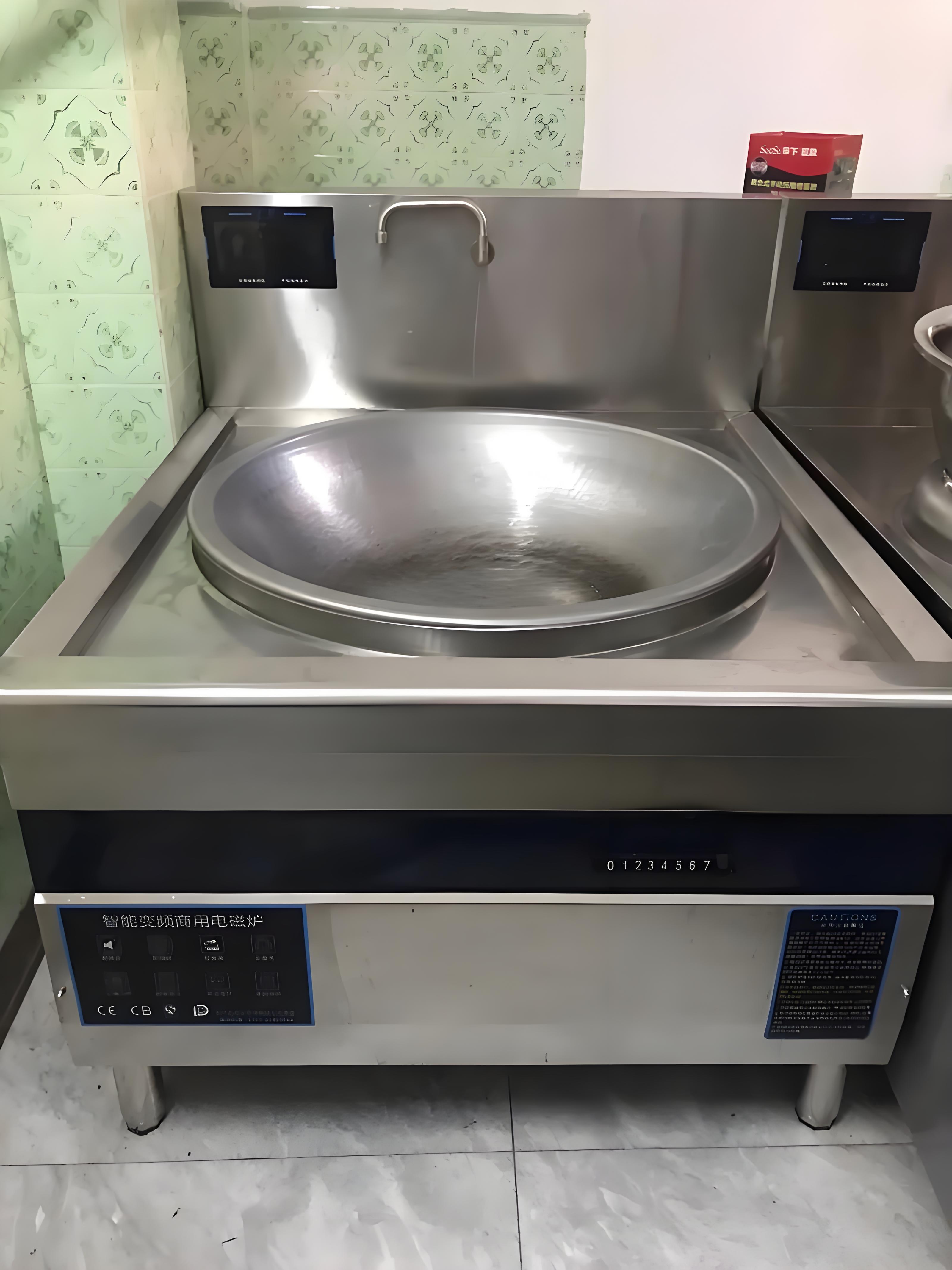In a dynamic commercial kitchen, especially in a busy restaurant, food service or large food production facility, it is not uncommon to have multiple commercial induction cookers running at the same time. As someone who has been involved in the commercial kitchen equipment industry for many years, I will share some practical insights and tips on how to safely and efficiently operate multiple commercial induction cookers at the same time.
1. Understanding the Basics of Commercial Induction Cookers
How Commercial Induction Cookers Work
Before diving into the operation of multiple units, it’s essential to have a clear understanding of how a single commercial induction cooker functions. Unlike traditional gas or electric cookers, induction cookers use electromagnetic fields to heat the cookware directly. An induction coil beneath the cooktop generates an alternating magnetic field. When a ferromagnetic cookware, such as a stainless – steel or cast – iron pot, is placed on the cooktop, the magnetic field induces eddy currents within the cookware. These eddy currents generate heat, which then cooks the food.
This method of heating is highly efficient as it transfers heat directly to the cookware, reducing heat loss to the surrounding environment. However, it also means that the cookware must be compatible with the induction cooker for it to work properly.

Components of a Commercial Induction Cooker
A typical commercial induction cooker consists of several key components. The control panel is where you can adjust the power levels, set timers, and select different cooking modes. The cooktop surface is where you place the cookware. It’s usually made of a durable, heat – resistant material like ceramic glass. The induction coil is the heart of the cooker, responsible for generating the magnetic field. Additionally, there are cooling fans to prevent the cooker from overheating and safety sensors that detect issues such as overheating, empty cookware, or improper cookware placement.
2. Pre – Operation Preparations
Space Planning
When setting up multiple commercial induction cookers, proper space planning is crucial. Each cooker needs sufficient clearance around it to ensure proper ventilation and easy access for maintenance. A minimum clearance of at least 6 inches (15 cm) around the sides and back of each cooker is recommended. This allows the cooling fans to work effectively and prevents heat buildup, which could potentially damage the cookers or pose a safety hazard.
Also, consider the flow of traffic in the kitchen. You don’t want the cookers to be placed in a way that obstructs the movement of staff or makes it difficult to load and unload cookware. A well – organized kitchen layout can significantly improve efficiency and safety.
Electrical Requirements
Commercial induction cookers require a significant amount of electrical power. Before installing multiple units, you need to ensure that your kitchen’s electrical system can handle the load. Check the power rating of each induction cooker, which is usually measured in watts or kilowatts. For example, a high – end commercial induction cooker may have a power rating of 3.5 kW or more.
If you’re installing multiple cookers, you’ll need to calculate the total power requirement and make sure that your electrical circuit can supply enough current. You may need to consult an electrician to upgrade your electrical system if necessary. Additionally, each cooker should be connected to a dedicated circuit with a proper circuit breaker to prevent overloading and electrical fires.
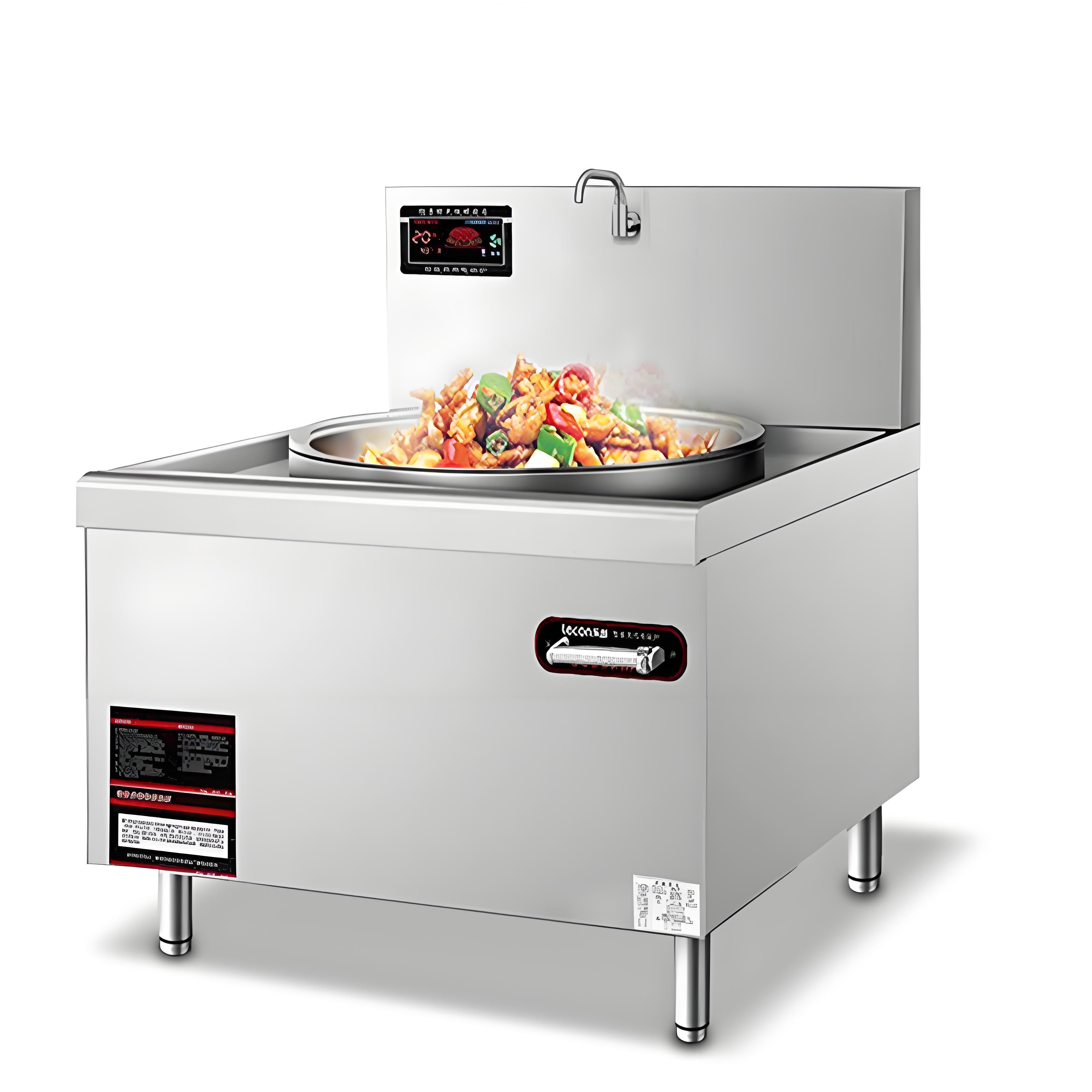
Cookware Selection
Since induction cookers rely on magnetic fields to heat the cookware, it’s essential to use the right type of cookware. Ferromagnetic materials such as stainless steel, cast iron, and some types of enameled cookware work best with induction cookers. You can test if your cookware is induction – compatible by placing a magnet on the bottom. If the magnet sticks firmly, the cookware should work with an induction cooker.
When operating multiple induction cookers, having enough compatible cookware is important. You don’t want to be in a situation where you have to wait for cookware to become available because you didn’t have enough of the right type. It’s also a good idea to have a variety of cookware sizes to accommodate different cooking needs.
Staff Training
Before allowing staff to operate multiple commercial induction cookers simultaneously, proper training is essential. Staff should be familiar with the operation of each induction cooker, including how to turn them on and off, adjust the power levels, and use the different cooking modes. They should also understand the safety features of the cookers, such as the overheating protection and empty – cookware detection.
Additionally, staff should be trained on proper cookware handling and placement. They should know how to place the cookware correctly on the cooktop to ensure efficient heating and prevent damage to the cooker. Regular refresher training sessions can help keep staff up – to – date on the latest operating procedures and safety guidelines.
3. Safe Operation Practices
Monitoring Power Levels
When operating multiple induction cookers, it’s important to monitor the power levels of each unit. Overloading the electrical circuit by running all the cookers at maximum power simultaneously can lead to electrical problems, such as circuit breakers tripping or even electrical fires. Instead, distribute the power usage evenly among the cookers.
For example, if you have four induction cookers and the total available power is limited, you could run two cookers at a medium – high power level and the other two at a lower power level, depending on the cooking requirements. You can also use the timers on the cookers to stagger the cooking times, so that not all cookers are drawing maximum power at the same time.
Preventing Overheating
Overheating is a common safety concern when operating multiple induction cookers. The cooling fans in the cookers work to dissipate heat, but if they are blocked or if the cookers are used continuously for long periods, they can still overheat. To prevent overheating, make sure that the cooling fans are not obstructed by any objects. Keep the area around the cookers clear of clutter.
Also, avoid running the cookers at maximum power for extended periods without a break. If you’re cooking a large batch of food that requires a long cooking time, consider dividing it into smaller batches and cooking them one after another. This not only helps prevent overheating but also allows for better control of the cooking process.
Handling Cookware Safely
When using multiple induction cookers, there will be a lot of cookware moving around. Staff should be trained to handle cookware safely to prevent burns and spills. Always use oven mitts or pot holders when handling hot cookware. When transferring cookware from one cooker to another or to a serving area, be careful not to splash hot food or liquids.
Also, make sure that the cookware is placed securely on the cooktop. If the cookware is not stable, it could tip over, causing burns and damage to the cooker. Teach staff to check the stability of the cookware before starting to cook.
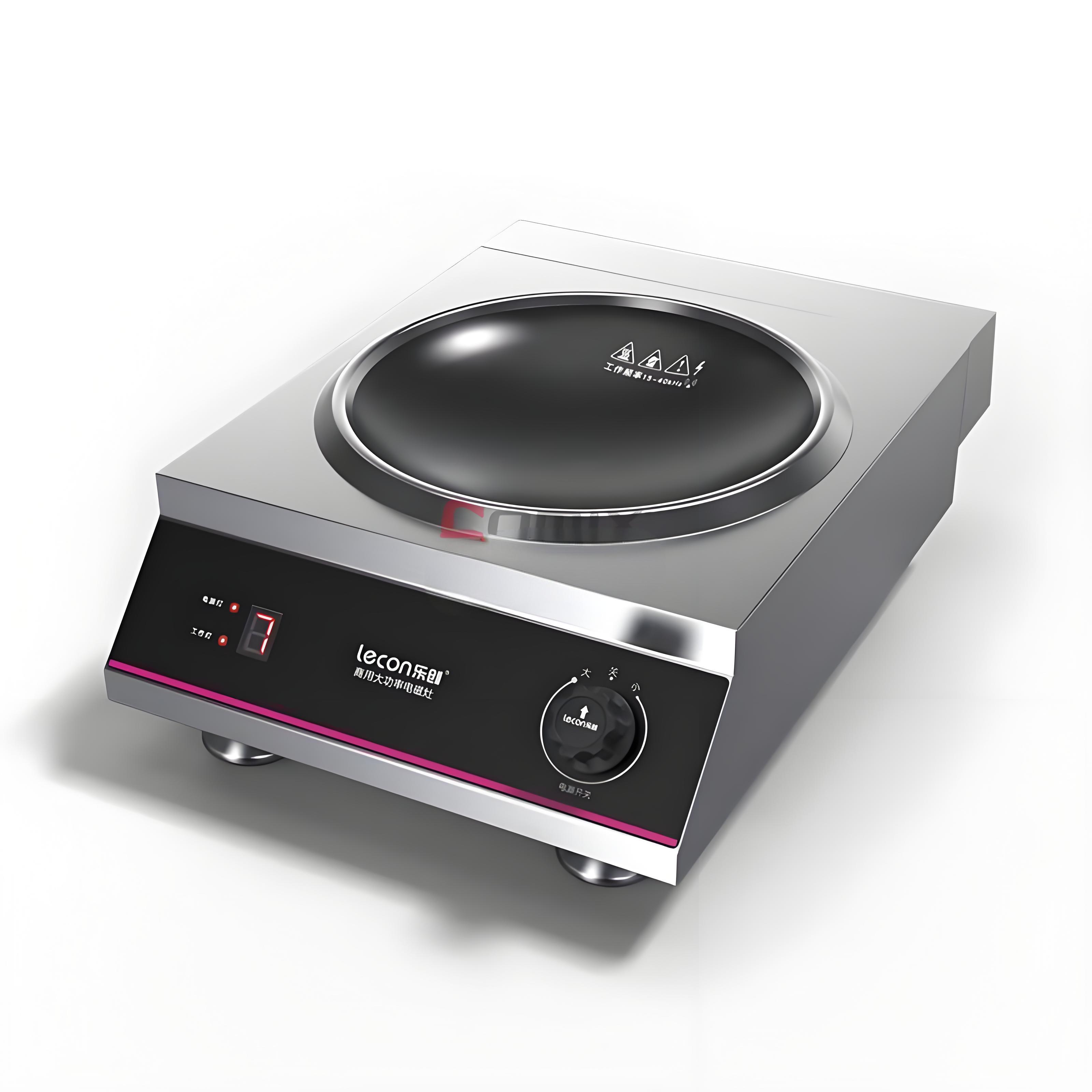
Emergency Procedures
Despite all the safety precautions, emergencies can still happen. It’s important to have clear emergency procedures in place when operating multiple commercial induction cookers. Staff should know how to quickly turn off the cookers in case of an emergency, such as a fire or a spill.
Keep fire extinguishers nearby and make sure that staff are trained on how to use them. Also, have a plan for evacuating the kitchen in case of a serious emergency. Regular emergency drills can help ensure that staff are prepared to respond quickly and effectively in an emergency situation.
Safe Operation Practices Table
| Practice | Description | Importance |
|---|---|---|
| Monitoring Power Levels | Distribute power usage evenly among cookers to avoid overloading the electrical circuit | Prevents electrical problems such as circuit breakers tripping and electrical fires |
| Preventing Overheating | Keep cooling fans unobstructed, avoid running cookers at maximum power for extended periods | Prevents damage to the cookers and reduces the risk of fires |
| Handling Cookware Safely | Use oven mitts, check cookware stability, and be careful when transferring cookware | Prevents burns and spills |
| Emergency Procedures | Have clear procedures for turning off cookers, using fire extinguishers, and evacuating the kitchen | Ensures a quick and effective response in case of an emergency |
4. Maintenance and Inspection
Regular Cleaning
Regular cleaning is essential to keep the commercial induction cookers in good working condition and to ensure safety. After each use, wipe down the cooktop surface with a damp cloth to remove any food spills or debris. Avoid using abrasive cleaners or scrubbers, as they can scratch the cooktop surface.
For more stubborn stains, you can use a specialized induction cooktop cleaner. Also, clean the control panel regularly to prevent dirt and grease from building up, which could interfere with the operation of the buttons or touch – sensitive controls.
Checking Electrical Connections
Periodically check the electrical connections of the induction cookers. Make sure that the plugs are securely inserted into the outlets and that there are no loose or frayed wires. Loose electrical connections can lead to electrical problems and pose a safety hazard.
If you notice any issues with the electrical connections, such as sparking or overheating, turn off the power to the cooker immediately and contact an electrician to have it repaired.

Inspecting Safety Features
The safety features of the commercial induction cookers are crucial for preventing accidents. Regularly inspect the overheating protection, empty – cookware detection, and other safety sensors to make sure they are functioning properly. You can test the overheating protection by running the cooker at maximum power for a short period and then checking if it shuts off automatically when it reaches a certain temperature.
If any of the safety features are not working correctly, stop using the cooker and have it repaired by a qualified technician.
Scheduled Maintenance
In addition to regular cleaning and inspections, it’s a good idea to schedule professional maintenance for the commercial induction cookers on a regular basis. A professional technician can perform a more thorough inspection, check the internal components, and make any necessary repairs or adjustments. This can help extend the lifespan of the cookers and ensure that they continue to operate safely and efficiently.
5. Optimizing Efficiency
Menu Planning
When operating multiple induction cookers, menu planning can play a significant role in optimizing efficiency. Plan your menu in a way that allows you to use the cookers effectively. For example, if you have a dish that requires a long cooking time at a low temperature, you can start cooking it on one cooker while using the other cookers for dishes that require shorter cooking times at higher temperatures.
Also, consider the compatibility of the dishes with the cookware you have available. If you have a limited number of certain types of cookware, plan your menu accordingly to avoid having to constantly switch cookware between cookers.
Cooking in Batches
Cooking in batches is another way to optimize efficiency when using multiple induction cookers. Instead of trying to cook everything at once, divide the food into smaller batches and cook them one after another. This allows you to make better use of the available cookware and power resources.
For example, if you’re making a large quantity of soup, you could cook it in two or three batches rather than trying to fit all the ingredients into one large pot on a single cooker. This also ensures that each batch is cooked evenly and to the desired consistency.
Using Timers and Alarms
Most commercial induction cookers come with built – in timers and alarms. Make use of these features to keep track of the cooking times for each dish. Set timers for each cooker so that you know when to check on the food or when it’s ready to be served.
This not only helps you stay organized but also prevents overcooking or undercooking. You can also use alarms to alert you when a cooker is turned on or off, which can be useful in a busy kitchen environment.
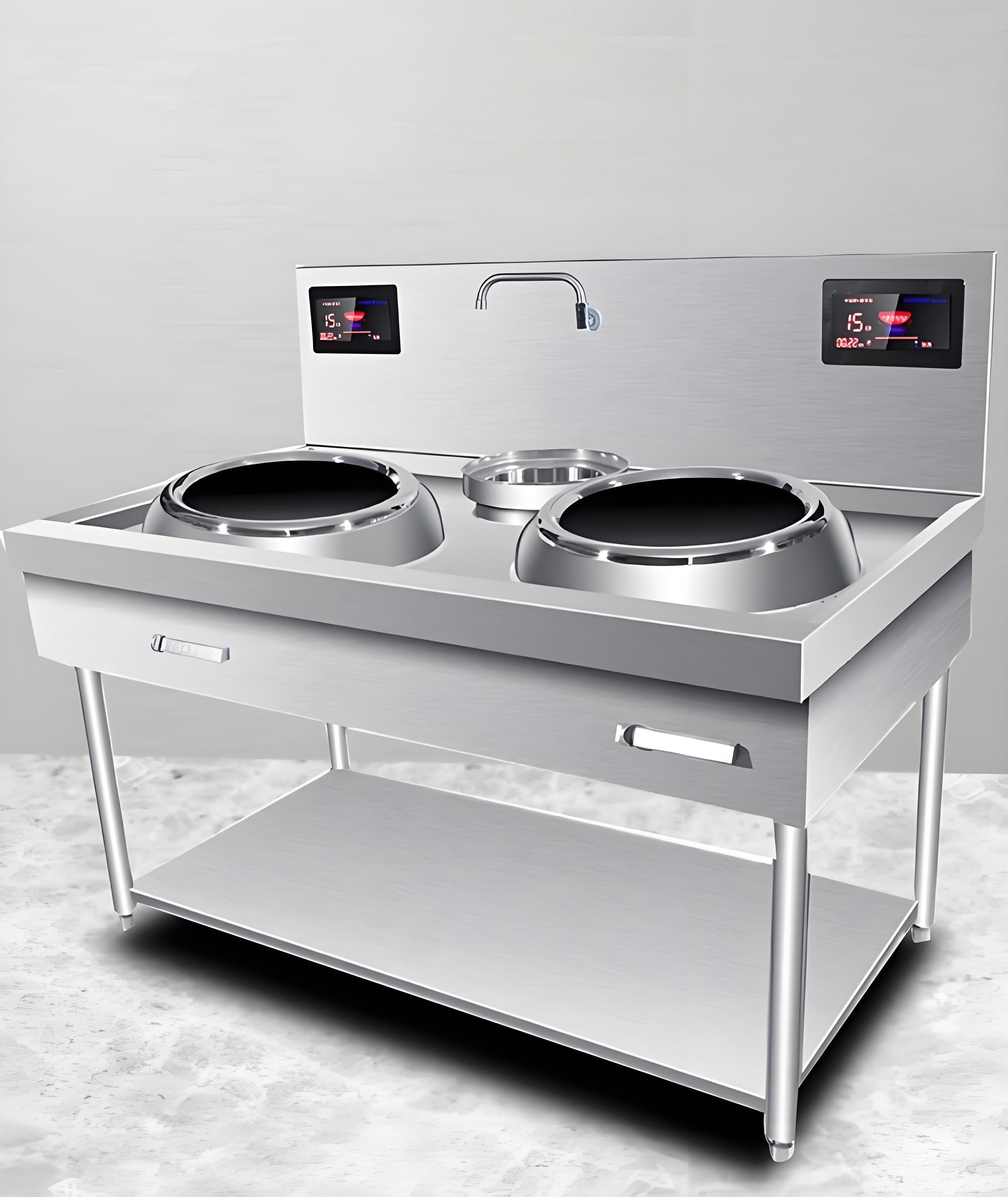
Related Questions and Answers
Q1: Can I use different brands of commercial induction cookers together?
A: Yes, you can use different brands of commercial induction cookers together, but there are a few things to keep in mind. First, make sure that the electrical requirements of each cooker are compatible with your kitchen’s electrical system. Also, the control panels and operating procedures may vary between different brands, so staff will need to be trained on how to use each type of cooker properly. Additionally, if you’re using multiple cookers for a coordinated cooking process, such as in a large – scale food production setting, you may need to adjust your cooking methods to account for any differences in power output or heating characteristics between the brands.
Q2: How often should I have my commercial induction cookers professionally maintained?
A: The frequency of professional maintenance for commercial induction cookers can depend on several factors, such as how often they are used and the conditions in your kitchen. As a general guideline, it’s recommended to have them professionally maintained at least once a year. However, if you use the cookers heavily, such as in a high – volume restaurant, you may want to consider having them serviced every six months. Regular professional maintenance can help identify and fix potential problems before they become major issues, extend the lifespan of the cookers, and ensure that they continue to operate safely and efficiently.
Q3: What should I do if one of the induction cookers stops working while I’m using multiple units?
A: If one of the induction cookers stops working while you’re using multiple units, the first thing to do is to stay calm. Turn off the power to the faulty cooker immediately to prevent any further damage or safety hazards. Then, check if there are any obvious signs of a problem, such as a blown fuse, a loose wire, or an error message on the control panel.
If you can’t identify the problem yourself, contact a qualified technician to come and inspect and repair the cooker. In the meantime, you may need to adjust your cooking plans and use the remaining cookers to finish the dishes. If possible, transfer any food that was cooking on the faulty cooker to another cooker to prevent it from spoiling.
Q4: Can I use induction – compatible cookware on other types of cookers?
A: In most cases, induction – compatible cookware can be used on other types of cookers, such as gas or electric cookers. Ferromagnetic materials like stainless steel and cast iron are commonly used in cookware and are suitable for a variety of cooking methods. However, there may be some exceptions. For example, some induction – compatible cookware may have a special coating or design that is optimized for induction cooking, and it may not perform as well on other types of cookers. Also, if the cookware has a flat bottom that is specifically designed to make good contact with the induction cooktop, it may not sit as evenly on a gas cooker with round burners. It’s always a good idea to check the manufacturer’s recommendations for the cookware to ensure that it’s suitable for the type of cooker you’re using.
Q5: How can I improve the energy efficiency when operating multiple commercial induction cookers?
A: There are several ways to improve the energy efficiency when operating multiple commercial induction cookers. First, as mentioned earlier, monitor the power levels and distribute the power usage evenly among the cookers to avoid overloading the electrical circuit and wasting energy. Second, use the right – sized cookware for each dish. Using a pot or pan that is too large for the amount of food you’re cooking can waste energy, as more heat is required to heat the larger surface area.
Third, keep the cooktop surface clean. A dirty cooktop can reduce the efficiency of the induction process, as the magnetic field may not be able to penetrate the dirt and debris effectively. Finally, consider using lids on your cookware when appropriate. Lids help to trap heat and reduce the cooking time, which in turn saves energy.
In conclusion, safely operating multiple commercial induction cookers simultaneously requires careful planning, proper training, adherence to safety practices, regular maintenance, and a focus on efficiency. By following these tips and guidelines, you can ensure that your commercial kitchen operates smoothly, safely, and efficiently, even when dealing with the demands of multiple induction cookers. Whether you’re running a small restaurant or a large – scale food production facility, these strategies will help you get the most out of your induction cookers while minimizing risks and maximizing productivity.
